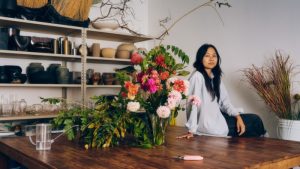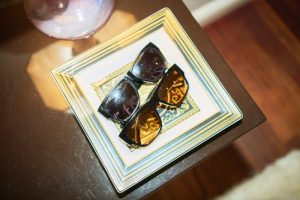I judged the best teas in the world: these were the winners
Unlock the Editor’s Digest for free
Roula Khalaf, Editor of the FT, selects her favourite stories in this weekly newsletter.
If you’re like two billion other people in the world, it’s likely you’ll have enjoyed a cup of tea recently. But when was the last time you looked at a tea leaf really closely? Despite thinking of myself as a tea lover, I hadn’t really considered the leaf very deeply until I was asked to be a guest judge at the UK Tea Academy x Fortnum & Mason Leafies Tea Awards, alongside experts from Taiwan, China, Sri Lanka, India, Japan and the UK.
Judging tea is a lot more holistic than judging wine or whisky because you assess the raw material as well as the end result. Each entry is delivered to the table, and brewed, alongside dry and steeped leaves, so you can see, touch, taste and smell the tea in all three states.

“A good tea has leaves that look beautiful,” explains The Chinese Tea Company founder Juyan Webster. “Very uniform, minimal broken leaves and not too many stalks, which can make a tea taste bitter. The colour should be glossy and consistent.”
Some teas were a mass of wiry needles, others were rolled as neat as grains of rice. We admired Indian Assams glinting with golden “tips” and leaves as red as rust. I watched Asako Steward, director of Tea Academy Japan, smear emerald-green matcha onto paper with a tiny spatula. “I’m looking for a colour that’s nice and bright, not khaki,” she explained, “and a powder that’s fine and silky.”



We assessed the leaves’ aroma and unrolled them to see how they’d been picked “This is a beautiful example of plucking,” said Chau-Jean Lin, an expert from a family of Taiwanese tea farmers, holding up a sprig comprising two leaves and a bud, which is considered ideal. The fresh tea was brought to the judging bench in big white bowls to show off clarity and colour. “If a black tea has a golden ring around the rim, that’s a sign of good balance,” said Steward.
We nosed, and slurped and savoured, and debated texture, flavour and finish. The very best teas had just as much character and complexity as any wine or spirit.


Gyokuro Saemidori green tea, £175 for 100g, fortnumandmason.com

Lumbini Sinharaja Wirey Tips Ceylon tea, £35 for 100g, fortnumandmason.com
Gold-medal winners, some of which will be on sale at Fortnum & Mason, included Tseng’s No 60 Black Beauty, a radiant black tea with fragrant mango/peach notes and a fine, nutty tannin; and a white tea from Taiwan’s Bajia Tea Factory with floral and grapefruit zest notes and a finish like a thread of incense.
“Best in Show” went to the fabulously creamy Saemidori Matcha by the Yame Tea Kumaenn, a 100-year-old family producer in Japan’s Fukuoka mountains. It’s extraordinary to think that all these teas came from the Camellia sinensis plant.
“Vietnam is now making great teas, and Africa is really coming on the radar,” says Academy director Jennifer Wood. “This year we also tasted teas from Latvia, Denmark and Australia. And quite a few from the UK: Dartmoor, Orkney, Wales.” The UK Tea Academy now runs an introductory course called the Tea Essential Award. Prepare to taste your tea like you’ve never tasted it before. theleafies.co.uk
@alicelascelles
#judged #teas #world #winners







